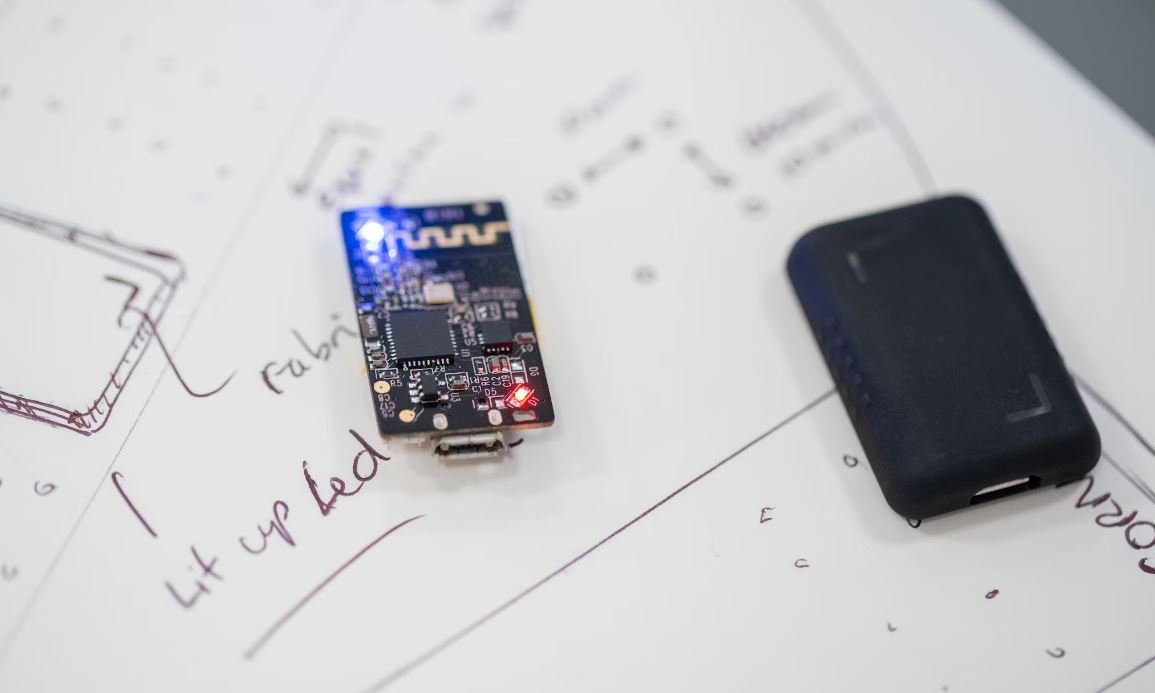AI Rules and Regulations
Artificial Intelligence (AI) has rapidly evolved in recent years, with advancements in machine learning, natural language processing, and computer vision. As AI becomes increasingly integrated into our daily lives, it is crucial to establish rules and regulations to ensure its safe and ethical use.
Key Takeaways:
- AI rules and regulations are essential for safe and ethical use of AI.
- Regulations address issues such as privacy, bias, and transparency in AI systems.
- International organizations and governments are actively working on developing AI guidelines.
Artificial intelligence has the potential to bring numerous benefits to society, including improved healthcare, enhanced decision-making, and increased efficiency in various industries. However, without proper regulations, there are also risks associated with AI. Privacy concerns, algorithmic biases, and lack of transparency in AI decision-making processes are just a few examples of the challenges that need to be addressed.
**To ensure the responsible use of AI, governments, researchers, and organizations have been actively developing rules and regulations** to govern its deployment. International organizations like the European Union (EU) and the Organization for Economic Cooperation and Development (OECD) have released guidelines on ethical AI. These guidelines emphasize the need to respect fundamental rights, promote transparency, and avoid bias in AI systems.
Current Regulations and Guidelines
Several countries have taken the initiative to develop their own AI regulations. China, for instance, released a comprehensive AI development plan that covers various aspects, such as research, industry, and governance. The plan aims to promote innovation, strengthen AI-related skills training, and establish a legal and ethical framework for the technology. The United States has also started exploring AI regulations, focusing on areas such as bias in algorithms, data privacy, and accountability.
**In addition to country-specific regulations, international collaboration is crucial to address AI’s global challenges.** The EU’s General Data Protection Regulation (GDPR) has set a precedent for data protection and privacy regulations, which also apply to AI systems processing personal data. The OECD’s AI Principles serve as a framework for responsible AI development, focusing on inclusive growth, sustainable development, and human-centric AI.
Regulating AI: Challenges and Opportunities
Regulating AI poses several challenges, such as the rapidly evolving nature of the technology, the potential for unintended consequences, and striking the right balance between innovation and regulation. However, it also presents opportunities to shape the future of AI in a way that benefits society as a whole.
*One interesting aspect of AI regulation is the concept of “explainability.” As AI systems become more complex, the ability to understand and explain their decision-making processes becomes crucial. This requirement for explainability ensures accountability and helps build trust in AI systems.*
Table 1: Examples of AI Regulations
| Country | AI Regulations |
|---|---|
| United States | Exploring regulations on bias, privacy, and accountability. |
| China | Comprehensive AI development plan covering industry, research, and governance. |
| European Union | General Data Protection Regulation (GDPR) applicable to AI systems processing personal data. |
As AI regulations continue to evolve, it is essential to strike the right balance between fostering innovation and ensuring ethical use. Governments, industry stakeholders, and researchers must work together to create a regulatory framework that promotes responsible AI development while also allowing for future advancements.
Table 2: International AI Guidelines
| Organization | Guidelines |
|---|---|
| European Union | AI regulations emphasizing transparency, fundamental rights, and avoiding biases. |
| Organization for Economic Cooperation and Development (OECD) | AI Principles focusing on sustainable development, inclusive growth, and human-centric AI. |
It is important to note that AI regulations alone cannot address all challenges associated with AI. Continuous research, collaboration, and public engagement are necessary to adapt regulations to the evolving AI landscape while considering societal impacts.
Table 3: Ethical Considerations in AI
| Consideration | Description |
|---|---|
| Privacy | Protecting personal data and ensuring individuals’ privacy rights are respected. |
| Bias | Avoiding unfair discrimination and bias in AI algorithms and decision-making. |
| Transparency | Ensuring AI systems are explainable, accountable, and transparent in their operations. |
As AI continues to shape various aspects of our lives, it becomes increasingly important to establish rules and regulations that address the ethical and societal implications of this technology. By fostering responsible AI development and deployment, societies can fully reap the benefits of AI while minimizing risks and ensuring oversight. Together, regulations and guidelines can pave the way for an AI-powered future that is safe, transparent, and beneficial to all.

Common Misconceptions
Misconception 1: AI is capable of making entirely objective and unbiased decisions
One common misconception people have about AI is that it is capable of making entirely objective and unbiased decisions. While AI algorithms may be designed to analyze and process data in an automated manner, they are ultimately programmed by humans. This means that AI systems can be influenced by the inherent biases and prejudices of their human creators. AI systems can inherit biases from the data they are trained on or the people who design them.
- AI systems can perpetuate discrimination and bias present in the training data.
- The decisions made by AI systems may be influenced by the biases and values of their human developers.
- AI systems may lack the ability to consider contextual information and individual circumstances, resulting in potentially unfair outcomes.
Misconception 2: AI will replace human jobs entirely
Another common misconception is that AI will completely replace human jobs, leading to widespread unemployment. While it is true that AI can automate certain tasks and processes, it is unlikely that AI will replace human workers in their entirety. Instead, AI is more likely to augment human capabilities and assist in performing certain tasks more efficiently and accurately.
- AI can free up human workers’ time by automating repetitive and mundane tasks.
- Human expertise and creativity are still essential in areas that require complex decision-making and critical thinking.
- AI may create new job opportunities in fields such as AI development, data analysis, and AI maintenance and management.
Misconception 3: AI is infallible and error-free
One misconception surrounding AI is that it is infallible and error-free. In reality, AI systems can make mistakes and errors, just like any other technology. AI systems heavily rely on the quality and relevance of the training data they receive, and if the data is flawed or incomplete, it can lead to inaccurate results and faulty decisions.
- AI systems can make false predictions or recommendations based on flawed or biased training data.
- Errors in AI systems can occur due to technical glitches or unforeseen scenarios that were not adequately accounted for during the algorithm design phase.
- Humans are still essential in monitoring and evaluating the outputs of AI systems and correcting any mistakes or biases that may arise.
Misconception 4: AI is a super-intelligent being that is capable of conscious thought
One of the most common misconceptions about AI is that it is a super-intelligent being with consciousness and self-awareness. While AI systems can demonstrate impressive pattern recognition and decision-making capabilities, they do not possess consciousness or the ability to think abstractly and reflect on their own existence.
- AI operates based on algorithms and predetermined rules, often without any understanding or awareness of the data it is processing.
- AI lacks consciousness, emotions, and subjective experiences that are associated with human intelligence.
- The goal of AI is to simulate and mimic human intelligence and behavior, not replace it with a sentient being.
Misconception 5: AI will pose an immediate and existential threat to humanity
Many people have a misconception that AI will pose an immediate and existential threat to humanity. While AI does bring certain risks and challenges, such as privacy concerns and ethical implications, the idea of AI rapidly surpassing human intelligence and plotting against humanity is more in the realm of science fiction and speculative scenarios.
- AI systems are created and controlled by humans, who have the responsibility to ensure their safe and ethical development and use.
- AI development is an ongoing process, and as we continue to advance in this field, there will be opportunities to address and mitigate potential risks.
- Proper regulations and oversight can help ensure AI technologies are developed and used in a responsible and beneficial manner.

Table: Global AI Funding
According to recent data, global funding for artificial intelligence (AI) projects has been steadily increasing over the past few years. The table below provides an overview of the funding received by different regions in 2019.
| Region | Funding (in billions) |
|---|---|
| North America | 12.5 |
| Europe | 8.9 |
| Asia | 7.1 |
| Latin America | 1.8 |
| Africa | 0.6 |
Table: AI Adoption in Industries
AI is being increasingly adopted across various industries, revolutionizing the way businesses operate. The table below highlights the industries that have embraced AI and the percentage of adoption in each sector.
| Industry | Adoption Rate |
|---|---|
| Finance | 80% |
| Healthcare | 65% |
| Retail | 55% |
| Manufacturing | 45% |
| Transportation | 30% |
Table: AI Ethics Guidelines
As AI becomes more advanced, there is a growing need for ethical guidelines to ensure responsible use. The table below outlines key principles recommended by leading organizations in the field.
| Principle | Description |
|---|---|
| Transparency | AI systems should be transparent and explainable to users. |
| Fairness | AI should not discriminate or perpetuate biases. |
| Privacy | User data should be protected and handled securely. |
| Accountability | Organizations should be accountable for the AI systems they deploy. |
| Safety | AI should be designed to ensure physical and psychological safety. |
Table: Global AI Patents
The race to develop AI technologies has led to a surge in patent applications worldwide. The table below presents the number of AI patents granted to different countries in 2020.
| Country | Number of Patents |
|---|---|
| United States | 23,490 |
| China | 17,520 |
| Japan | 10,680 |
| Korea | 5,870 |
| Germany | 3,940 |
Table: Impact of AI on Jobs
As AI technologies evolve, there are concerns about their impact on employment. The table below categorizes the effects of AI on various job sectors.
| Job Sector | Effect of AI |
|---|---|
| Manufacturing | Automation of repetitive tasks, job displacement |
| Finance | Improved efficiency, job creation in AI-related roles |
| Healthcare | Enhanced diagnostics, demand for healthcare AI specialists |
| Education | Personalized learning, increased demand for edtech professionals |
| Transportation | Autonomous vehicles, potential job losses for drivers |
Table: AI Regulations by Country
As the impact of AI grows, countries around the world are implementing regulations to govern its use. The table below highlights some notable AI regulations adopted by different nations.
| Country | Key AI Regulations |
|---|---|
| United States | Guidelines for AI ethics and safety, limited sector-specific restrictions. |
| European Union | General Data Protection Regulation (GDPR), emphasis on accountability and transparency. |
| China | National-level AI development plan, increased government oversight. |
| Canada | Pan-Canadian AI Strategy, focus on responsible and inclusive AI. |
| Australia | AI ethics framework, regulatory sandboxes for AI experimentation. |
Table: AI Startups by Country
Startups play a crucial role in driving AI innovation. The following table showcases the leading AI startups by country and their respective areas of specialization.
| Country | AI Startups | Specialization |
|---|---|---|
| United States | OpenAI, Nuro, UiPath | Natural language processing, autonomous vehicles, robotic process automation |
| China | SenseTime, Megvii, Horizon Robotics | Computer vision, facial recognition, autonomous systems |
| Israel | Mobileye, Cortica, Zebra Medical Vision | Autonomous driving, image recognition, medical diagnostics |
| Canada | Element AI, Rubikloud, Kindred | Enterprise AI solutions, retail automation, collaborative robots |
| United Kingdom | DeepMind, FiveAI, Babylon Health | Machine learning, autonomous vehicles, healthcare AI |
Table: AI Adoption in Government
Governments are increasingly recognizing the potential of AI in delivering public services efficiently. The table below showcases the level of AI adoption in various government sectors.
| Government Sector | AI Adoption Rate |
|---|---|
| Defense and Security | 70% |
| Public Safety | 60% |
| Transportation | 55% |
| Healthcare | 45% |
| Social Services | 35% |
Table: AI Research Publications
The AI research community plays a pivotal role in advancing the field. The table below highlights the number of research publications in the top AI conferences over the past five years.
| Conference | Number of Publications |
|---|---|
| NeurIPS | 2,500 |
| CVPR | 1,800 |
| ACL | 1,200 |
| AAAI | 900 |
| ICML | 700 |
The tables above provide a glimpse into the world of AI, including investment trends, ethical considerations, industry adoption, government initiatives, and research advancements. From global funding to AI patents and from ethical guidelines to job transformation, AI continues to reshape multiple facets of our society. As AI becomes increasingly integrated into our lives, it is crucial to strike a balance between innovation and ensuring responsible and ethical use. By understanding the complexities surrounding AI rules and regulations, we can navigate this transformative technology with greater confidence and purpose.
Frequently Asked Questions
What are AI rules and regulations?
AI rules and regulations refer to the guidelines and laws that govern the development, deployment, and use of artificial intelligence technologies.
Why do we need AI rules and regulations?
We need AI rules and regulations to ensure the responsible and ethical development of AI systems, protect the rights and privacy of individuals, and mitigate potential risks associated with AI technologies.
Who creates AI rules and regulations?
AI rules and regulations are typically developed by government bodies, regulatory agencies, or international organizations, in collaboration with experts from various fields such as computer science, law, and ethics.
What are some common areas covered by AI rules and regulations?
Common areas covered by AI rules and regulations include data protection, algorithmic transparency, fairness, accountability, safety, security, and the impact of AI on the workforce.
How do AI rules and regulations impact the development of AI technologies?
AI rules and regulations can influence the development of AI technologies by setting standards, guidelines, and requirements that developers and organizations must follow to ensure compliance and responsible use of AI.
Can AI rules and regulations restrict the use of AI technologies?
Yes, AI rules and regulations can impose restrictions on the use of AI technologies, especially in sensitive areas such as healthcare, finance, and defense, to prevent potential harm, privacy violations, or unfair practices.
What are the penalties for non-compliance with AI rules and regulations?
The penalties for non-compliance with AI rules and regulations can vary depending on the jurisdiction and the gravity of the violation. They may include fines, legal actions, or other appropriate measures to enforce compliance.
Are there international standards for AI rules and regulations?
Currently, there are no globally unified AI rules and regulations. However, efforts are being made to establish international frameworks and standards to promote ethical and responsible AI development and deployment.
How do AI rules and regulations address biases in AI systems?
AI rules and regulations aim to address biases in AI systems by promoting fairness and non-discriminatory practices. This may involve auditing algorithms, ensuring diverse training data, and implementing mechanisms for accountability and transparency.
What is the role of AI rules and regulations in protecting privacy?
AI rules and regulations play a crucial role in protecting privacy by defining guidelines for the collection, handling, and usage of personal data in AI systems. They help ensure that individuals’ privacy rights are respected and safeguarded.




